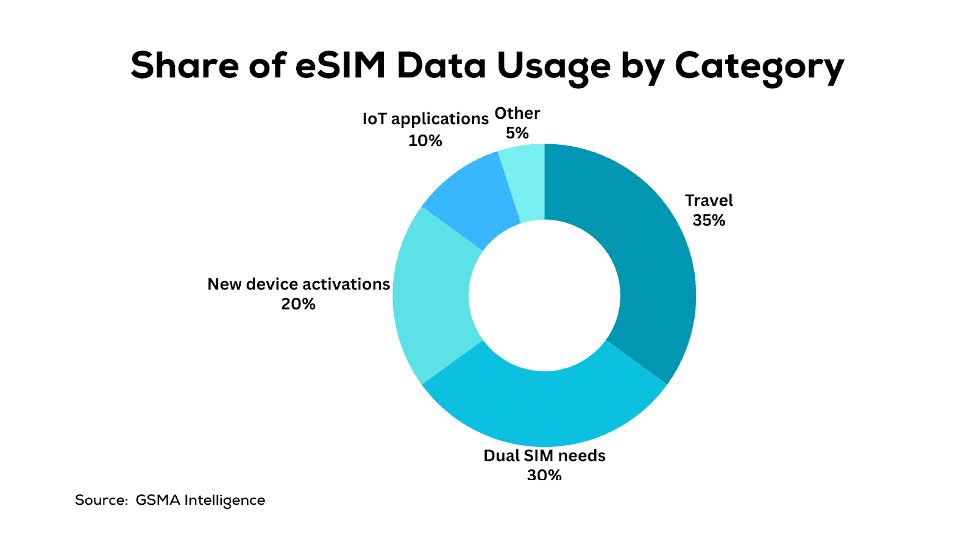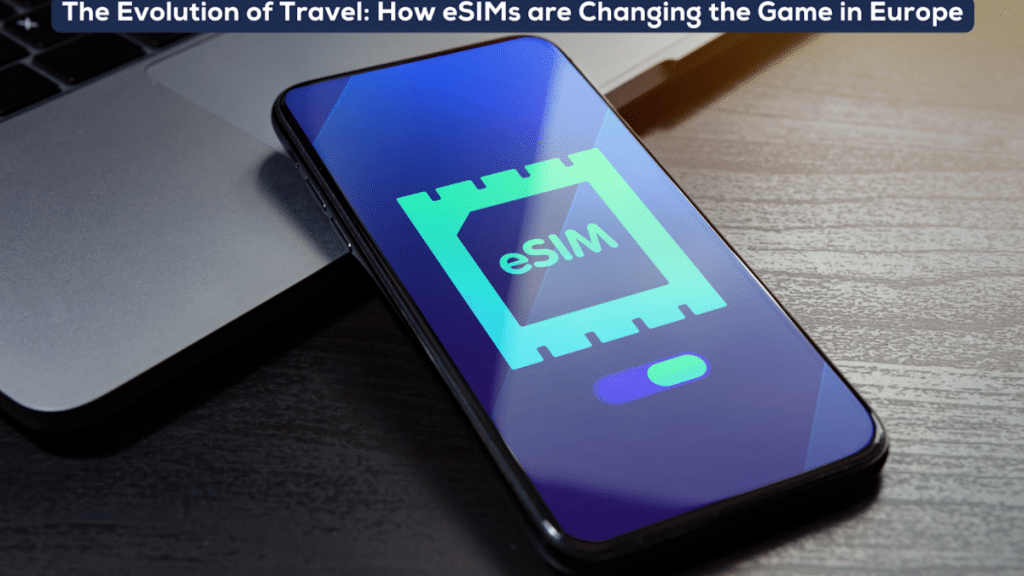21st-century travelers expect instant connectivity wherever their journey takes them. Therefore, the traditional physical SIM card is fading into obsolescence as eSIM technology revolutionizes mobile data for travelers in Europe and beyond.
Introduction to the eSIM revolution in European travel
eSIMs, or embedded SIMs, represent a monumental shift in how travelers access mobile data worldwide. With an eSIM, the SIM chip is embedded directly into a device, eliminating the need for a physical card. This brings greater convenience, efficiency, and connectivity to users.
According to GSMA, Europe is to reach a 92% mobile penetration rate by 2030. As countries across the continent upgrade to 5G networks, eSIM technology will be at the core of keeping travelers connected on the go.
The Necessity of Mobile Data in Modern European Travel
Reliable mobile data has become indispensable for travelers. With over 60% of the global online population now using mobile devices to access the internet, connectivity cannot be taken for granted.
Unlike sporadic Wi-Fi hotspots, eSIMs deliver continuous access to maps, translators, transportation and accommodation apps, social media, and more. For the modern traveler, mobile data is a necessity, not a luxury.
With major European cities and rural regions continually improving their digital infrastructure, the demand for constant connectivity will only increase in the coming years.
Limitations of Traditional International Data Plans
For years, travelers have relied on international data plans from major providers such as AT&T, Verizon, and T-Mobile. However, these plans have notable limitations.
With 4G LTE offering only 35-60Mbps speeds, traditional data plans lag behind Europe’s growing 5G networks. Their data caps can be quickly consumed by bandwidth-heavy uses like video streaming. The cost-per-gigabyte rates are often unreasonable for extensive travel.
As user needs evolve, legacy data plans are failing to deliver the coverage, speed, and affordability required in today’s digital landscape.
Understanding eSIM Technology
So where do eSIMs come in? eSIMs are directly integrated into the modem of compatible devices. This allows users to instantly activate data plans from various carriers through a scanning code or app.
With eSIMs, switching plans and networks is a breeze. You can have multiple profiles activated simultaneously, enjoying localized data in different countries or dual SIM capabilities.
5G is central to eSIM technology, and 5G connectivity in Europe is to contribute €153 billion to the economy by 2030. As 5G transforms mobile experiences, eSIMs will undoubtedly pave the future of travel connectivity.
Best eSIM Data Plans for Europe
For those venturing across Europe, flexible eSIM data plans abound Europe Holafly, offers data allowances ranging from 1GB to 10GB, ideal for moderate internet users who want to stay connected for essential tasks like mapping, messaging, and occasional browsing.
Holafly: Offers coverage in over 32+ European nations starting at $10 for 1GB. Choose from various data plans to suit your needs, from smaller options for occasional browsing to larger packages for streaming and staying connected. You can share your Holafly eSIM data with up to five compatible devices, eliminating the need for separate plans.
Holafly also provides 24/7 Customer Support to help and assistance whenever you need it, even while you’re on the go.
When comparing providers, look for coverage in your destination countries, maximum data speeds, and competitive rates for your trip length. Avoid overpaying with customized eSIM plans.
Advantages of eSIM mobile data plans for travelers

eSIMs make travel connectivity a breeze with these key advantages:
1. No SIM cards to manage:
Order plans online and activate digitally, no physical SIM cards to obtain, swap, or potentially lose.
2. Dual SIM capabilities:
Use an eSIM plan alongside your regular number for separate data and calling.
3. Instant activation:
Get connected in minutes by scanning a barcode or QR code. No waiting for SIM shipping.
4. Easy network switching:
Change plans or providers on the fly based on your location.
5. Enhanced security:
Keep data more secure with remote profile management instead of swapping SIM cards.
6. Multi-country coverage:
Some plans cover 40+ European nations for seamless roaming.
7. Better roaming rates:
eSIM plans offer affordable high-speed data compared to roaming with your domestic carrier.
With eSIMs, crossing borders no longer means hassling with new SIM cards. You enjoy greater flexibility, cost savings, and the luxury of constant connectivity.
Compatibility of eSIMs with Current Smartphones
Many newer smartphone models now come with built-in eSIM capabilities, including:
- iPhone XR, XS, XS Max – Dual SIM (1 eSIM + 1 nano-SIM)
- iPhone 11 Series – Dual SIM (1 eSIM + 1 nano-SIM)
- iPhone 12 and 13 Series – Dual SIM (1 eSIM + 1 nano-SIM)
- Google Pixel 3, 4, 5, 6 Series – eSIM + nano-SIM
- Samsung Galaxy S20 Series – Dual SIM (1 eSIM)
With eSIM compatibility expanding rapidly, more travelers than ever can embrace this revolution in mobile connectivity. Some Samsung S20 models still use a physical dual SIM.
Turning on a SIM Card for Europe
Activating a Europe SIM card is super easy; just a couple of quick steps:
- Buy your plan online. They’ll email or text you an activation barcode.
- Open the barcode on your phone. Scan it with your camera or enter the code by hand.
- Follow the instructions on the screen to finish. Then reboot your phone.
- You’ll now see your new Europe plan! Select it to connect.
- Run a speed test and start using data!
Handy Tips:
- Connect to WiFi when you can to save data
- Turn off auto-renewal so you don’t get charged by accident
- Check the app to see data used in each country
- Ask customer support if you have any issues
With a Europe SIM, you’ll stay connected abroad with fast and affordable data.
Frequently Asked Questions
1. Do Europe plans come with a local phone number?
Sometimes yes! That lets you call or text local numbers without international fees. But you don’t need a local number just for data.
2. How much data will I need when traveling there?
Light users can get by on 1-2GB per week. Medium users around 2-4GB. And heavy users over 4GB per week. Limit streaming to save data when you can.
3. Can I use my plan in all European countries?
It depends. Some work in 40+ countries there. Others only cover EU regions. Check maps before buying a plan.
Bottom Line
As phones keep improving, it’s easier access data wherever you travel. SIM cards are the way to go abroad! With some quick steps, you can activate and start seamlessly using mobile data across Europe. Stay connected, no matter where your adventures take you!
